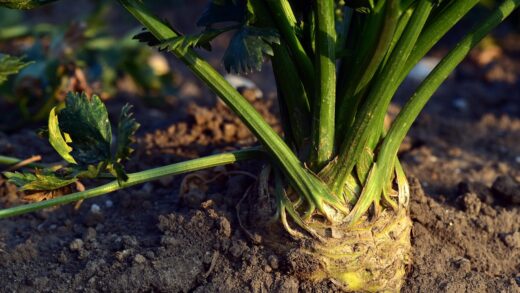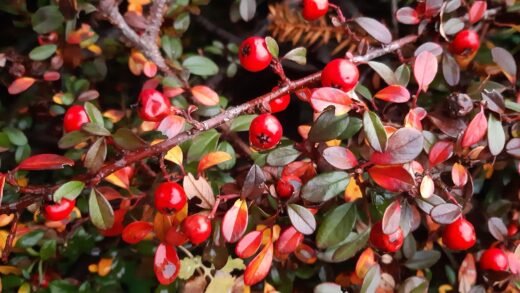Providing the clustered tulip with the appropriate nutrients is a key component of ensuring its long-term health, vigour, and ability to produce a spectacular floral display year after year. While these species tulips are not considered heavy feeders, a well-balanced approach to fertilization can make a significant difference, particularly in less-than-ideal soils or when encouraging them to naturalise. The primary goal of fertilizing is not necessarily to produce bigger flowers in the current season, but rather to help the bulb replenish its energy stores after flowering, which fuels the development of the following year’s blooms and the production of new offset bulbs. Understanding what nutrients the plant needs, and when it needs them, is crucial for an effective feeding strategy.
Tulips, like all plants, require a range of macronutrients and micronutrients, but the most important ones for bulb health are phosphorus (P) and potassium (K). Phosphorus plays a vital role in root development and energy transfer within the plant, which is essential for a strong foundation. Potassium is crucial for overall plant health, disease resistance, and efficient water regulation; it is particularly important for the process of bulb formation and maturation. While nitrogen (N) is necessary for leaf and stem growth, an excess of it can be detrimental to tulips, promoting lush, weak foliage at the expense of flowers and making the plant more susceptible to fungal diseases.
The ideal time to apply fertilizer is in the autumn at the time of planting or in early spring just as the new shoots are emerging. Incorporating a slow-release granular fertilizer into the soil at planting time provides a steady supply of nutrients for the developing roots throughout the winter and into the spring. Bone meal has traditionally been a popular choice for bulbs due to its high phosphorus content. Alternatively, a balanced granular fertilizer specifically formulated for bulbs, which will have a lower nitrogen content and higher levels of phosphorus and potassium (e.g., a 5-10-10 N-P-K ratio), is an excellent option to mix into the planting hole or the entire bed.
Another critical window for fertilization is immediately after the blooming period. This may seem counterintuitive, but feeding at this stage is not for the flowers that have just faded; it is for the future health of the bulb. As the foliage begins its work of photosynthesizing to replenish the bulb, providing a dose of nutrients can greatly aid this process. A liquid feed high in potassium, such as a tomato fertilizer, can be applied at this time. This helps the bulb to bulk up and store the maximum amount of energy before it enters its summer dormancy, ensuring a robust and flower-filled return the following spring.
Understanding essential nutrients
To effectively fertilize the clustered tulip, it is important to understand the role of the three primary macronutrients: nitrogen (N), phosphorus (P), and potassium (K). Each of these elements plays a distinct and critical role in the life cycle of the plant. A balanced supply of these nutrients is the foundation of healthy growth, vibrant flowering, and long-term perennial performance. The ratio of these nutrients, often displayed as an N-P-K value on fertilizer packaging, should be carefully considered to meet the specific needs of tulips.
Nitrogen is primarily responsible for vegetative growth, meaning the development of leaves and stems. A sufficient amount of nitrogen is necessary for the plant to produce the green foliage required for photosynthesis. However, an excess of nitrogen is a common problem in tulip cultivation. Too much nitrogen encourages the growth of soft, lush leaves that are more susceptible to diseases like tulip fire. It can also inhibit flower production, leading to a disappointing display of mostly foliage, and can even weaken the bulb itself over time, reducing its ability to perennialize.
Phosphorus is often referred to as the ‘root-builder’. Its most critical function is to promote strong and extensive root development. A healthy root system is essential for the plant to anchor itself and to efficiently absorb water and other nutrients from the soil. Phosphorus is also a key component in the processes of energy transfer, such as photosynthesis and respiration. For tulips, this nutrient is vital for the development of a healthy, robust bulb that has the energy reserves to survive dormancy and produce strong growth in the spring. Bone meal is a classic organic source of phosphorus.
Potassium plays a multifaceted role in overall plant health and is particularly important for bulbs. It helps to regulate the plant’s water balance and is essential for the activation of enzymes involved in various growth processes. Potassium strengthens the plant’s cells, improving its resistance to diseases, pests, and environmental stresses like cold or drought. Crucially for tulips, it plays a significant part in the formation and ripening of the bulb, ensuring it has the necessary resources stored to produce high-quality flowers in the subsequent season. It is a key driver of flowering and fruiting in many plants.
Fertilizing at planting time
Providing a nutritional foundation at the time of planting is one of the most effective ways to support the long-term health of your clustered tulips. Amending the soil with the right kind of fertilizer in the autumn gives the bulbs a head start, ensuring that essential nutrients are available as soon as their roots begin to grow. This initial feeding is focused on promoting strong root establishment and building a healthy bulb, rather than forcing rapid leaf growth. A slow-release fertilizer is ideal for this purpose, as it will gradually make nutrients available over the winter and into the spring.
A highly recommended fertilizer for this stage is a granular bulb food, which is specifically formulated with an appropriate N-P-K ratio for bulbous plants. These fertilizers are typically low in nitrogen but rich in phosphorus and potassium. When preparing the planting bed, this granular fertilizer can be broadcast over the entire area and worked into the top 15-20 centimetres of soil. Alternatively, if you are planting bulbs individually, you can add a small spoonful of the fertilizer into the bottom of each planting hole, mixing it lightly with the soil to prevent direct contact with the base of the bulb, which can cause chemical burn.
Bone meal is a traditional and effective organic amendment to use when planting bulbs. It is an excellent source of phosphorus and also contains some calcium, both of which are beneficial for root and bulb development. Like granular bulb food, bone meal should be mixed into the soil at the bottom of the planting hole. It is a very slow-release nutrient source, meaning it will break down gradually over a long period, providing a sustained supply of phosphorus that aligns perfectly with the needs of the developing bulb.
Beyond specific fertilizers, the best foundation for any plant is a healthy, fertile soil. Before you even consider adding concentrated fertilizers, ensure the soil is rich in organic matter. Incorporating well-rotted compost or leaf mould into the planting bed is perhaps the single most beneficial thing you can do. Organic matter not only provides a slow and steady release of a wide range of nutrients but also dramatically improves soil structure, aeration, and water retention. A soil rich in organic material will support a healthy ecosystem of microorganisms that help to make nutrients available to the plant roots.
Feeding during the growing season
While a good start at planting time is crucial, providing additional nutrients during the active growing season can further enhance the performance and longevity of your clustered tulips. The timing and type of fertilizer applied during this period are important. The primary window for spring feeding is from the time the shoots first emerge until the plant begins to flower. A light application of a balanced granular fertilizer can be scattered on the soil surface around the plants as they begin to grow. The spring rains will then help to wash the nutrients down into the root zone.
Once the tulips are in full bloom, there is generally no need to continue fertilizing. At this stage, the plant is primarily using the energy that was already stored in the bulb from the previous season to produce its flowers. Adding fertilizer during flowering will have little effect on the current year’s display and can sometimes even shorten the life of the blooms. The focus of the plant is on its floral show, and nutrient uptake for storage purposes slows down during this peak period.
The most critical time for a post-bloom feeding is right after the flowers have faded. This is when the foliage takes centre stage, working to create and send energy back down to the bulb for storage. Applying a fertilizer at this point directly supports this vital process, helping the bulb to bulk up and ensuring it has the reserves needed for a strong performance the next year. This feeding is arguably more important for the perennialisation of the tulips than a spring feed.
For this post-flowering application, a liquid fertilizer is often the best choice as it is absorbed more quickly by the plant’s roots. Choose a fertilizer that is low in nitrogen and high in potassium, often referred to as a ‘bloom booster’ or ‘fruit and flower’ feed. Liquid tomato food, for example, typically has an ideal N-P-K ratio for this purpose. Dilute the fertilizer according to the package instructions and water the soil around the base of the plants. Continue this feeding every couple of weeks until the foliage begins to turn yellow, at which point all feeding and watering should cease as the plant enters dormancy.
Fertilizing tulips in containers
Clustered tulips grown in containers have different and more intensive fertilization needs compared to their garden-grown counterparts. The limited volume of potting compost in a container can only hold a finite amount of nutrients, which are quickly depleted by the growing plants. Therefore, container-grown tulips are almost entirely reliant on the gardener for a consistent supply of food throughout their growing season. A robust feeding strategy is essential to produce a beautiful display and to keep the bulbs healthy enough to be viable for subsequent years.
The fertilization program should begin when the shoots first appear. You can start with a balanced liquid fertilizer, applying it every two to three weeks. A ‘balanced’ feed means it has roughly equal proportions of nitrogen, phosphorus, and potassium. This will support the initial development of healthy leaves and stems. Be sure to dilute the fertilizer to the strength recommended on the packaging, as an overly concentrated solution can damage the delicate roots of the plants in the confined space of a pot.
As the flower buds begin to form and rise, it is beneficial to switch to a fertilizer that is higher in potassium. This shift in nutrients encourages strong flower development and vibrant colour. A liquid tomato feed is an excellent and readily available option for this purpose. Continue with this high-potassium feed every couple of weeks through the flowering period and, most importantly, for several weeks after the flowers have faded. This post-bloom feeding is critical for helping the bulb in the container to replenish its energy stores, a task made more difficult by the limited resources of a pot.
When initially potting up the bulbs in the autumn, you can also incorporate a slow-release granular bulb food into the compost mix. This provides a baseline level of nutrition that will become available to the plants as they start to grow in the spring. However, this should be seen as a supplement to, not a replacement for, the regular liquid feeding program. The combination of a slow-release fertilizer in the compost and a consistent liquid feeding schedule during growth will provide your containerized clustered tulips with the comprehensive nutrition they need to thrive.

















